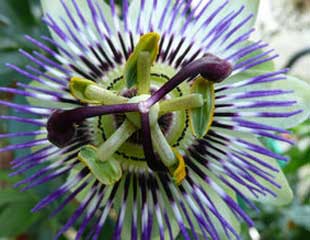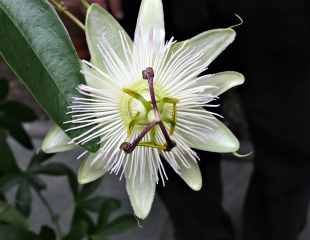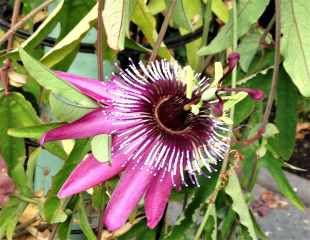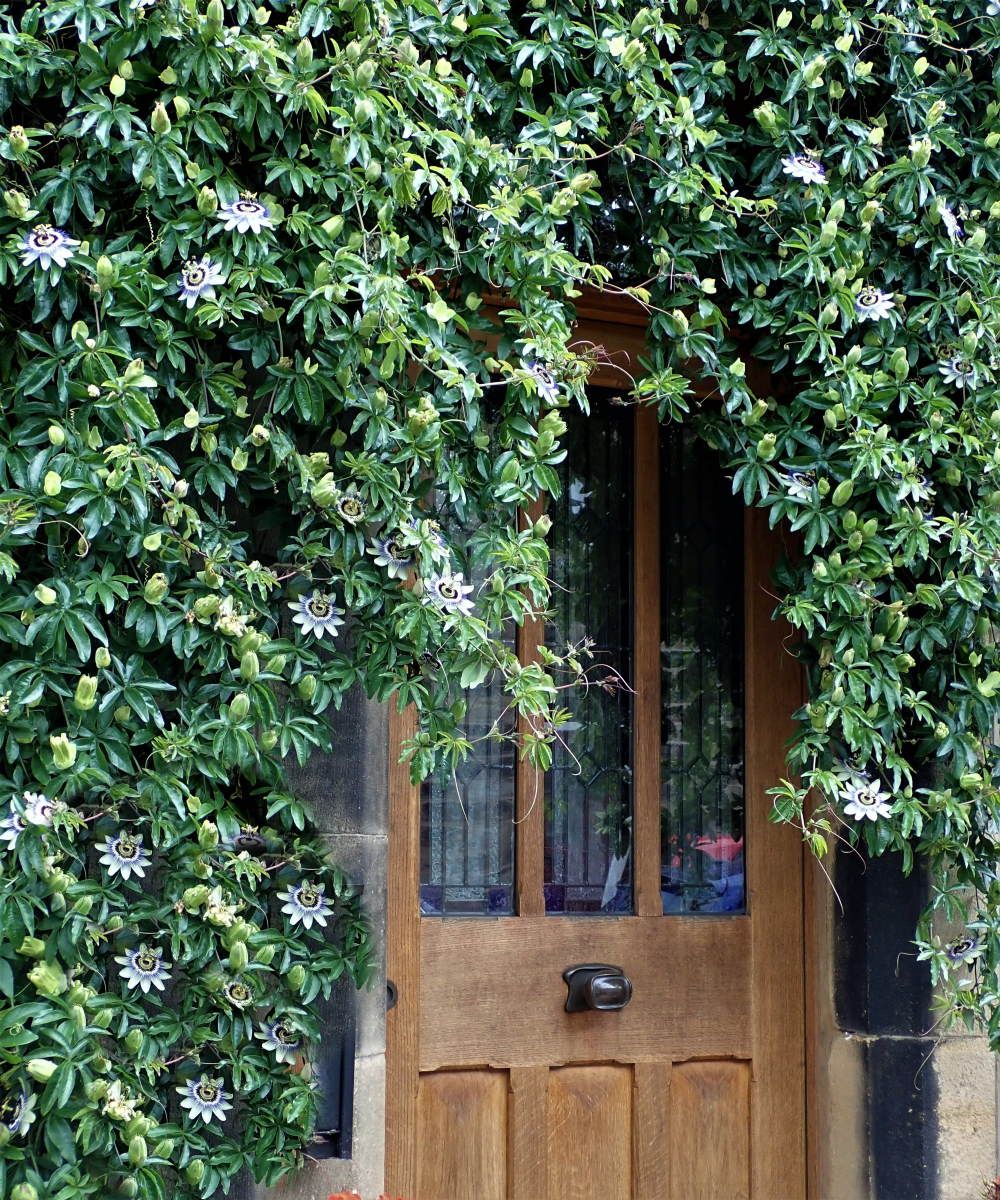How to grow Passion Flower



Key Facts:
Height: varies 8-10m
Light: Best in full sun but will tolerate light shade
Soil: Any free-draining
Maintenance: Hardiness depends on the variety. Passiflora caerulea, the blue passion flower, and most commonly grown is H4, which is hardy in most of the UK.
Special features: Exotic-looking flowers in showy abundance all summer. Easy to grow, evergreen to semi-evergreen in colder areas. Flowers best grown in a warm, sheltered spot against a wall is ideal

I tagged passion flower as green wheelbarrow as it is easy to grow and low maintenance. Note: Passiflora caerulea is harmful if ingested and causes an upset stomach. Its foliage and roots are toxic.
where to plant and how to grow Passion Flower
Passion flowers look exotic, but in fact, are easy to grow. Passiflora caerulea, the popular Blue Passion flower, requires only a little attention and is a green wheelbarrow plant.
The first image, top left, illustrates the Blue Passion flower, which is widely sold online and in garden centres. A native of South America, it is popular, in part, because it is hardy H4, which means -5 to -10. I have seen Passion flowers grown in colder, more exposed areas, and will survive lower temperatures if planted in the right (sheltered) place.
Passion flowers grown in colder areas shed most, if not all, of their leaves in winter, and are at best semi-evergreen in colder areas. In a reasonably sheltered spot, planted in well-drained soil, a Passion flower plant should require no additional attention or care over winter.
Passion flowers are quite vigorous; RHS lists the climber as potentially a nuisance, and it does appear on the list of garden thugs. However, since for most of us gardeners, the problem is getting things to grow, I would not be concerned with planting Passion flower, and it responds well to pruning, see below.
The less hardy varieties, such as Passiflora caerulea 'Constance Elliott' P. violacea, illustrated centre image, unless grown in a very sheltered part of the UK, will need to be container-grown and brought under glass over winter.
The ideal planting place for a Passion flower is a sheltered spot, southwest or west facing, close to a wall if possible, to protect from cold winds. In well-drained soil which is on the moist side, not too dry. If the ground conditions are dry, water after planting to get established. Passion flower is best planted in early autumn when the soil is still warm, and the autumn rains will water the plant until it is well-established.
Passion flowers grow best and produce the most flowers in full sun, when they may also produce fruits in the form of orange /yellow oval fruits.
Passion flowers require little or no maintenance and can be vigorous, growing up to 8-12 meters. Growing them in a container is possible, but they will require a large container since they are vigorous climbers. Also, by necessity, the more tender varieties will need to be grown in a container to bring them under cover for winter.
Gardening advice often mentions growing passion flowers in a conservatory. The problem is that many conservatories in the summer reach high temperatures, which makes it a hostile environment for most plants. (Pelargoniums are the exception, which tolerate conservatory conditions.) Unless your conservatory is well-ventilated, cooled and with a good amount of shade, it is likely to be too hot for plants, including passion flowers.
The third image on the right, P.violacea is more tender still and will only withstand temperatures down to 1.C and will need glass or greenhouse protection over winter.
The Latin name for Passion flower, is Passiflora, so called after the Passion of Christ. It is said that the stigma and anther represent the nails on the cross and the wounds.
There are many attractive climbing plants to choose from for your garden. For more information, images, and growing advice about climbing plants.
How hardy is the hardy Passion flower?

Often a question, how hardy are Passion flowers?
Illustrated left is Passiflora caerulea, a picture I took of a Passion flower thriving, climbing up the front of a house in a Pennine village in northern England, an area known to be cold and often wet.
The well-established P. caerulea shown here is even bearing fruits, indicating the northern extent to which P. caerulea can grow and thrive.
Most garden centres in UK offer P. caerulea for sale,which has the RHS Award of Garden Merit, a reliable indicator.
How to Prune Passion flowers
Passion flower does not require routine pruning, although it will benefit from training to a fan shape rather than letting the tendrils determine the growth, which may end up looking untidy. P.caerulea, the most commonly grown, can be vigorous, and, over time outgrow its allotted space or become untidy. Passion flowers can be pruned after flowering to keep in shape or in the spring, the latter may result in reduced flowering that year.
Passion flowers have tendrils, which means it is self supporting and will climb and twine. However, like many tendril plants, it can tangle, so you should train it to space out the branches and flowers. A trellis is ideal for a Passion flower to catch onto.
When first planted, to get the passion flower to grow into a good shape, take 3-5 strong stems and train them with at least 2 stems running laterally. If you need to prune it, do so after flowering, which will be early Autumn time, cutting back to a neat framework of buds.
You can hard prune a Passion flower if it becomes overgrown, and this is best done in the Spring. You can cut back harder, 30-60cms from soil level. It's vigorous and will grow back, producing lots of new shoots which are best then fan trained to keep it in shape.
